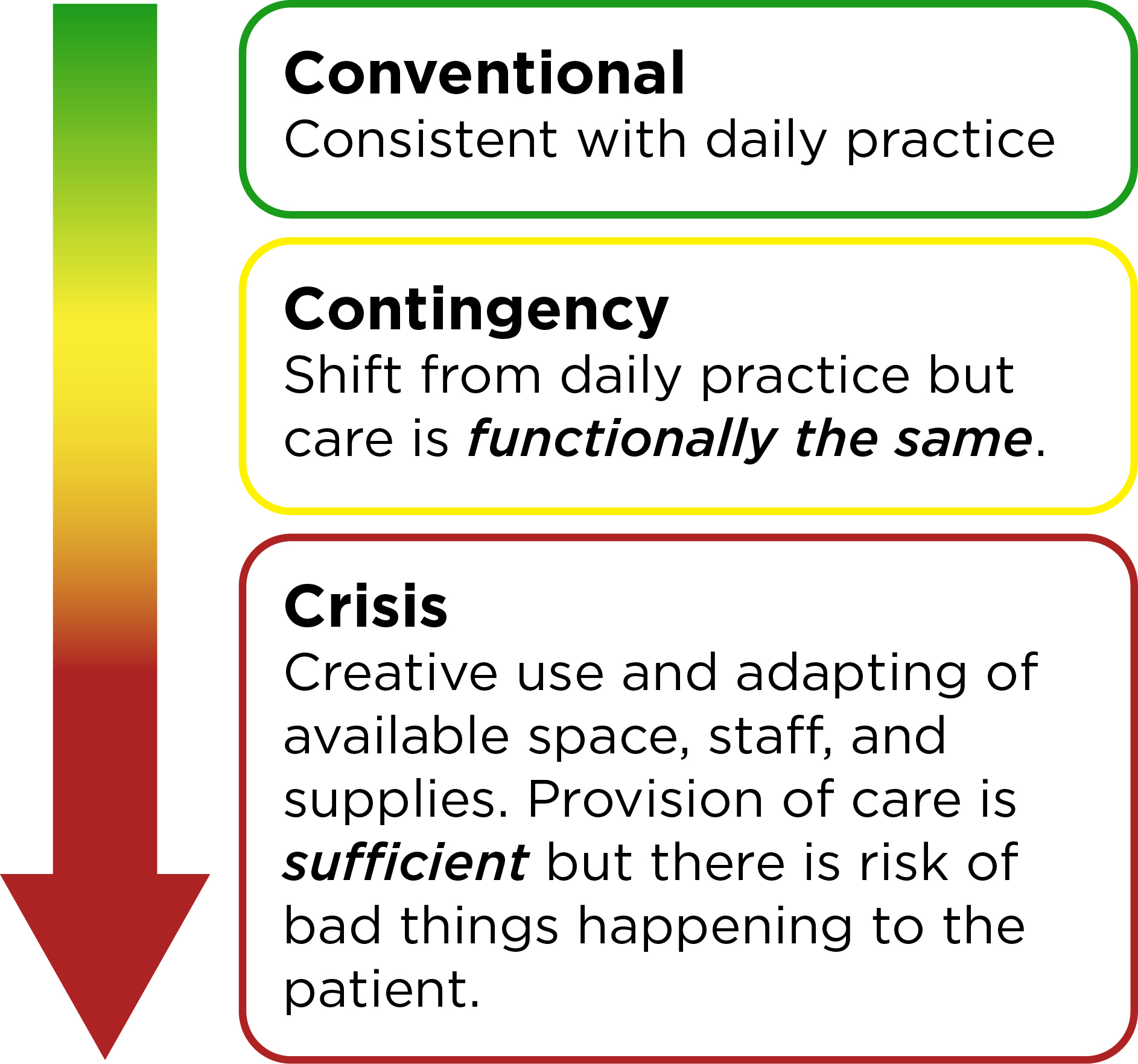Disaster Medicine Handbook: A Quick Reference
Crisis Standards of Care
In a disaster, hospitals and clinics may not have enough staff, space, or supplies to care for everyone in the usual way. When this happens, standards of care must change so that as many lives as possible can be saved.
Healthcare providers may have to adjust how care is delivered depending on the situation.
As care changes, providers must get creative with space, staff, and supplies. Some patients may face greater risks because the usual care can’t be given.
There are typically 3 phases:

Adapted from ASPR Tracie
Implementing crisis standards of care requires clear messaging to both healthcare staff and the community. This maintains transparency and sets expectations.
Even during a crisis, care should still be:
-
Fair: no one is treated differently based on things like age, race, or income
-
Consistent: patients with similar needs get similar care
-
Respectful and Ethical
Ethical and legal issues may arise when practicing at crisis standards of care. These issues can be magnified in the care of children.
As the situation improves, standards of care may gradually shift back towards the conventional.
 |
How did the standards of care change in your area during the COVID-19 pandemic? |
Written by Dennis Ren
Last updated: 5/30/2025